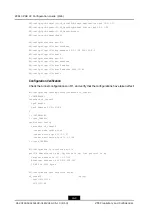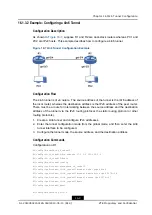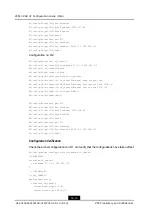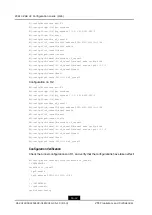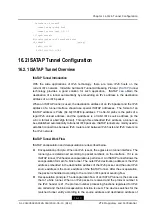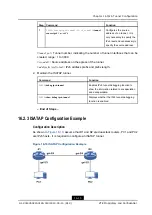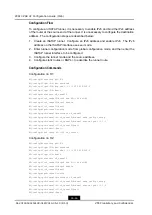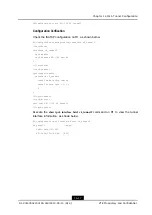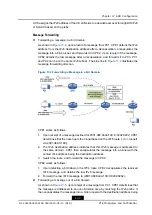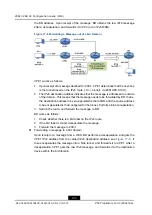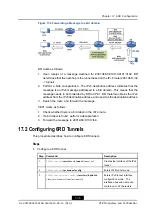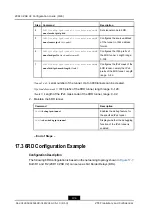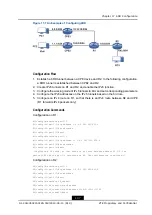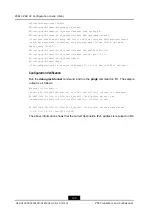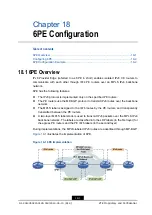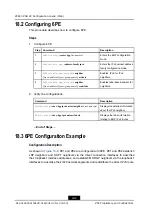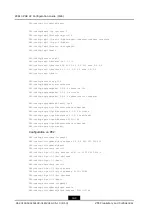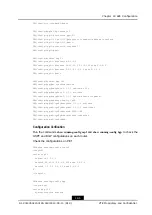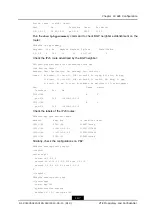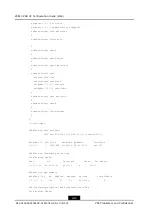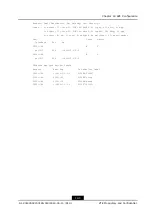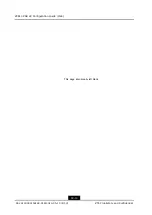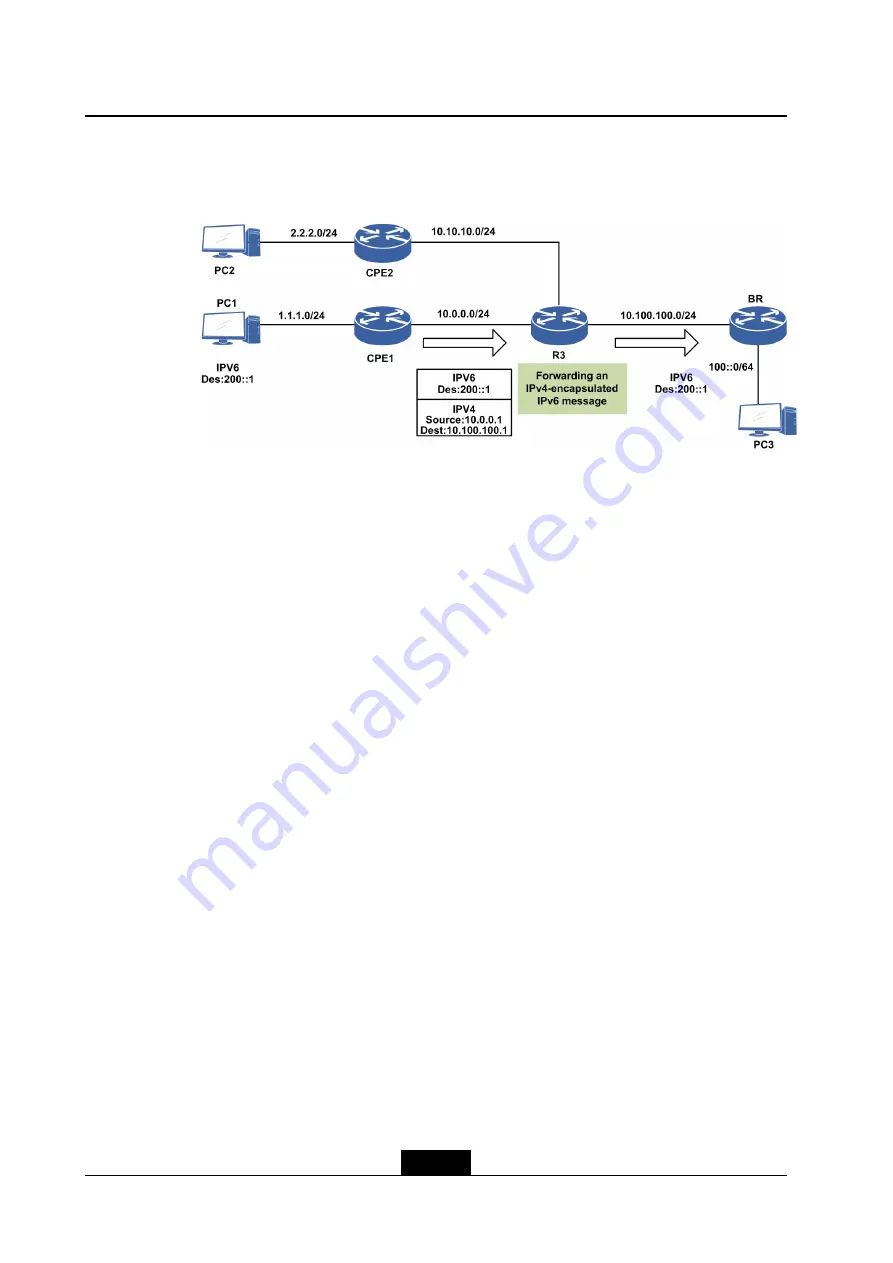
ZXR10 ZSR V2 Configuration Guide (IPv6)
the BR address. Upon receipt of the message, BR obtains the raw IPv6 message
after a decapsulation, and forwards it to PC3 (or an IPv6 WAN).
Figure 17-5 Forwarding a Message out of a 6rd Domain
CPE1 works as follows:
1.
Upon receipt of a message destined for 200:1, CPE1 determines that the next-hop
is the tunnel based on the IPv6 route (::/0 -> tunnel1 via 2001:db8:0:100:).
2.
The IPv6 destination address indicates that the message is addressed to outside
of the domain. This means that the message needs to be forwarded by BR, that is,
the destination address to be encapsulated is that of BR, and the source address
to be encapsulated is that configured for the tunnel. Perform a 6in4 encapsulation.
3.
Search the route, and forward the message to BR.
BR works as follows:
1.
Check whether there is a 6rd label on the IPv4 route.
2.
If the 6rd label is found, decapsulate the message.
3.
Forward the message to 200::1.
l
Forwarding a message to a 6rd domain
Upon receipt of a message from a WAN, BR performs a decapsulation, and gets the
CPE1 IPv4 address from the carried IPv6 destination address, see
. It
then encapsulates the message into a 6in4 tunnel, and forwards it to CPE1. After a
decapsulation, CPE1 gets the raw IPv6 message, and forwards it to the destination
device within the 6rd domain.
17-4
SJ-20140504150128-018|2014-05-10 (R1.0)
ZTE Proprietary and Confidential

